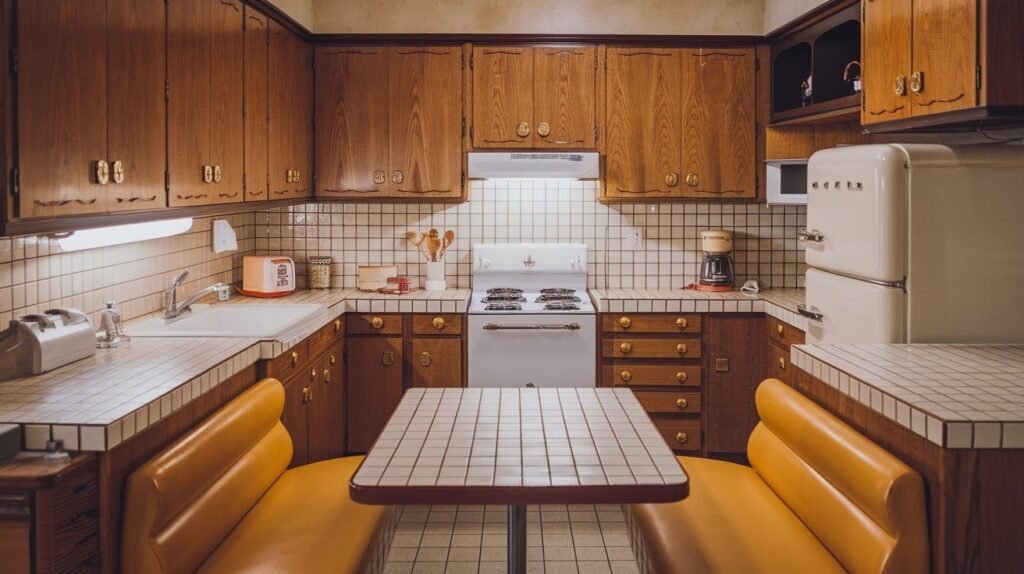The 1980s might seem like ancient history, but some kitchen design ideas from that decade are surprisingly fresh today. Bold colors, geometric patterns, and innovative storage solutions from the 80s can make your modern kitchen more functional and fun.
Many homeowners struggle with boring, cookie-cutter kitchens that lack personality. You want a space that feels both stylish and practical, but you’re not sure how to achieve that balance.
Here’s the thing: we’ve spent years studying kitchen design trends that stand the test of time. We’ve seen what works in real homes, not just magazine spreads. Our research shows that certain 80s elements can solve common kitchen problems while adding character.
In this article, you’ll find 11 proven ideas that blend retro charm with modern functionality. These aren’t gimmicky trends they’re wise design choices that can improve your kitchen into a space you’ll love using every day.
Ready to give your kitchen some personality?
The Return of 1980s Kitchen Aesthetics
1980s kitchen designs are making a real comeback. Bold colors, playful layouts, and retro details now feel surprisingly modern and stylish.
From Despised to Desired
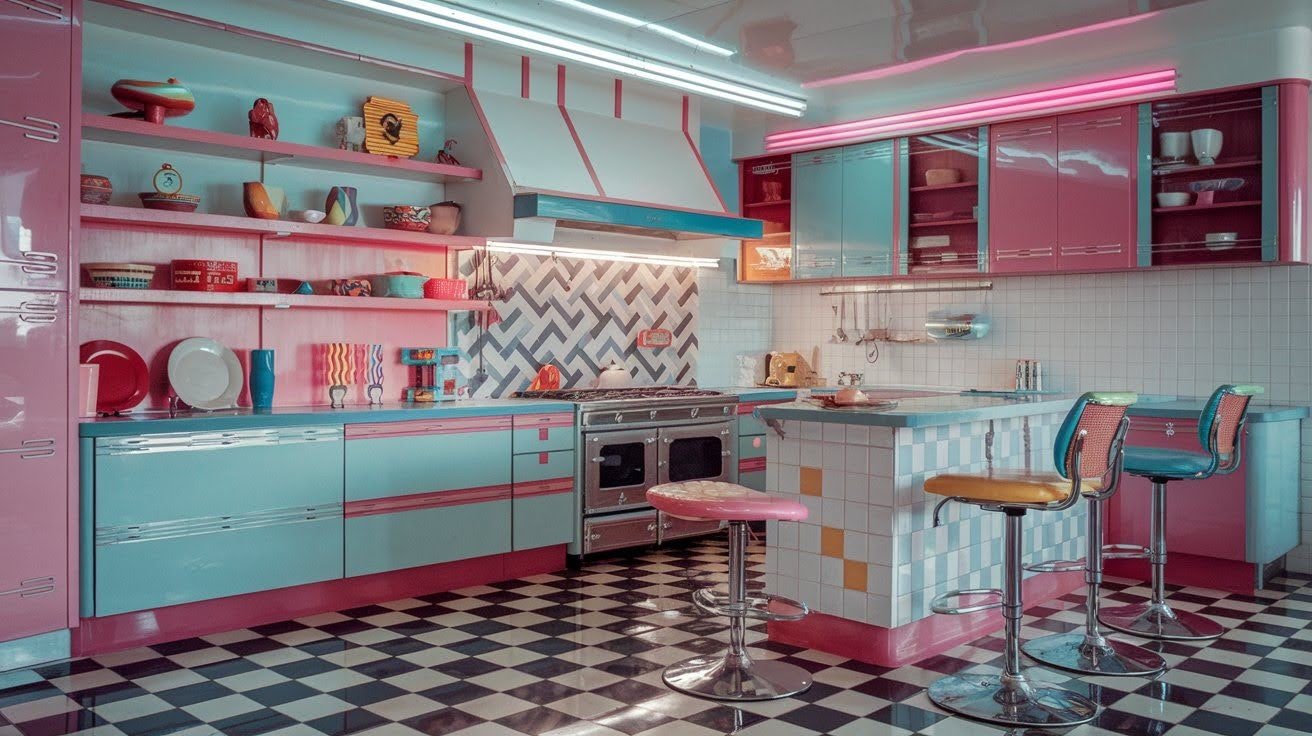
Remember when everyone called 80s kitchens tacky? Those days are over. The design world has come full circle. What once seemed outdated now feels fresh and bold. Memphis design, with its wild shapes and bright colors, is back in a big way.
Young designers are copying those “weird” graphics that your parents probably hated. Here’s what I’ve learned: 80s kitchens weren’t just about following trends. They were about having fun with your space. That decade gave us kitchens with personality. Something most modern kitchens seriously lack.
What Made 80s Kitchens Unique
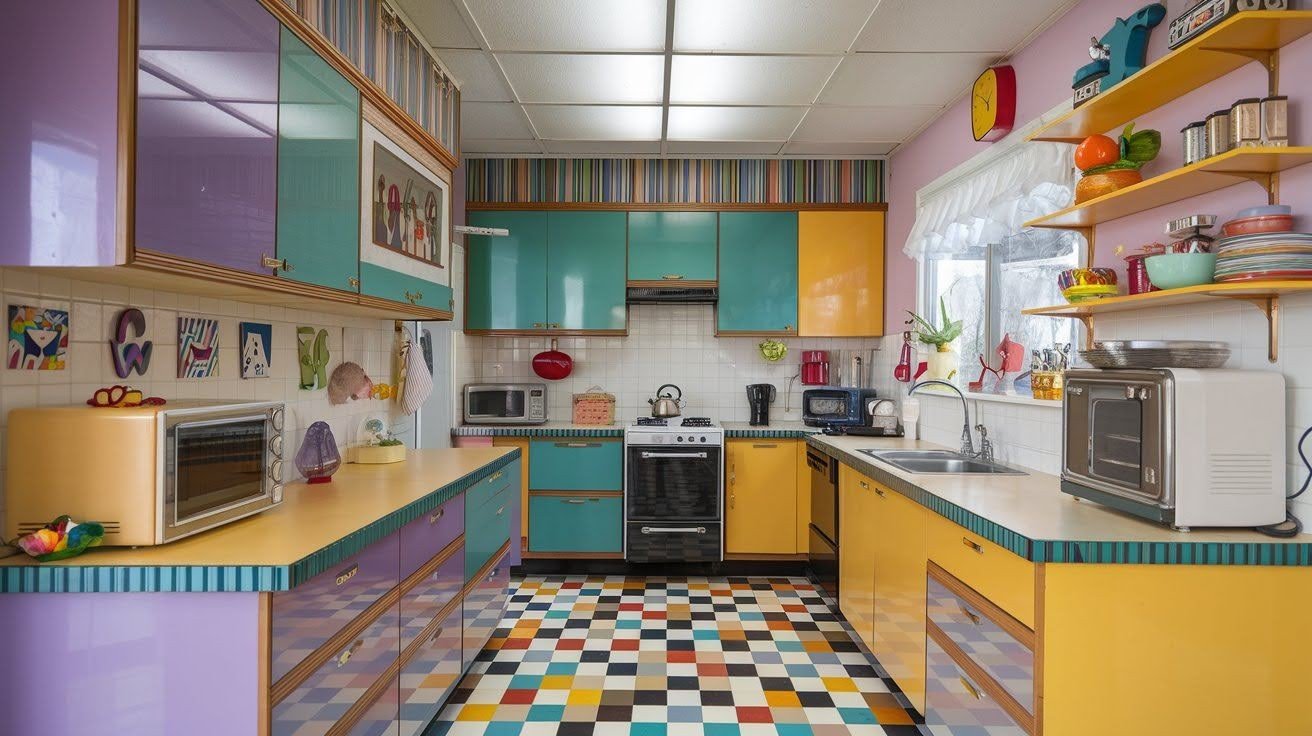
Mix and match was the name of the game. Purple cabinets with teal countertops? Why not!
Bold color combinations ruled everything. Designers weren’t afraid of contrast or making statements.
Technology was exciting then. New appliances meant new possibilities. Microwaves, food processors, and fancy coffee makers changed how people cook. The result? Kitchens that told stories about the people who lived there.
11 Timeless 1980s Kitchen Ideas
These 11 kitchen ideas from the 1980s still work today, with smart layouts, warm materials, and bold choices that feel fresh again.
1. Wood Cabinets with Character
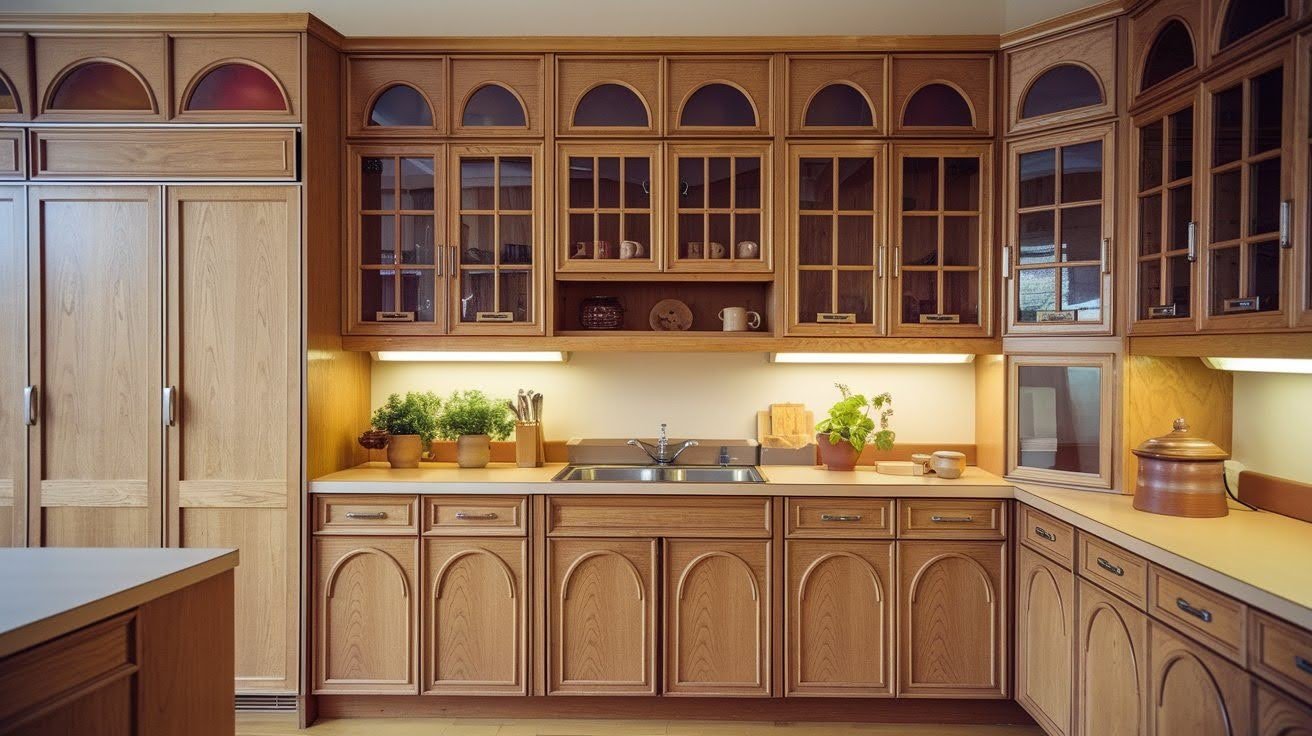
Why they work: Wood brings natural warmth that never goes out of style. Back in the 80s, oak was king. Cathedral doors, arched panels, and flat designs were all mixed.
Some looked busy, but the concept was solid. Here’s the modern twist: Add glass doors or open shelving to lighten things up. Choose muted brown stains instead of that orange oak finish.
Keep the grain patterns simple. This way, you get warmth without the dated look. Your kitchen will feel cozy, not cold like those all white spaces everyone’s doing now.
2. Black Appliances Making a Statement
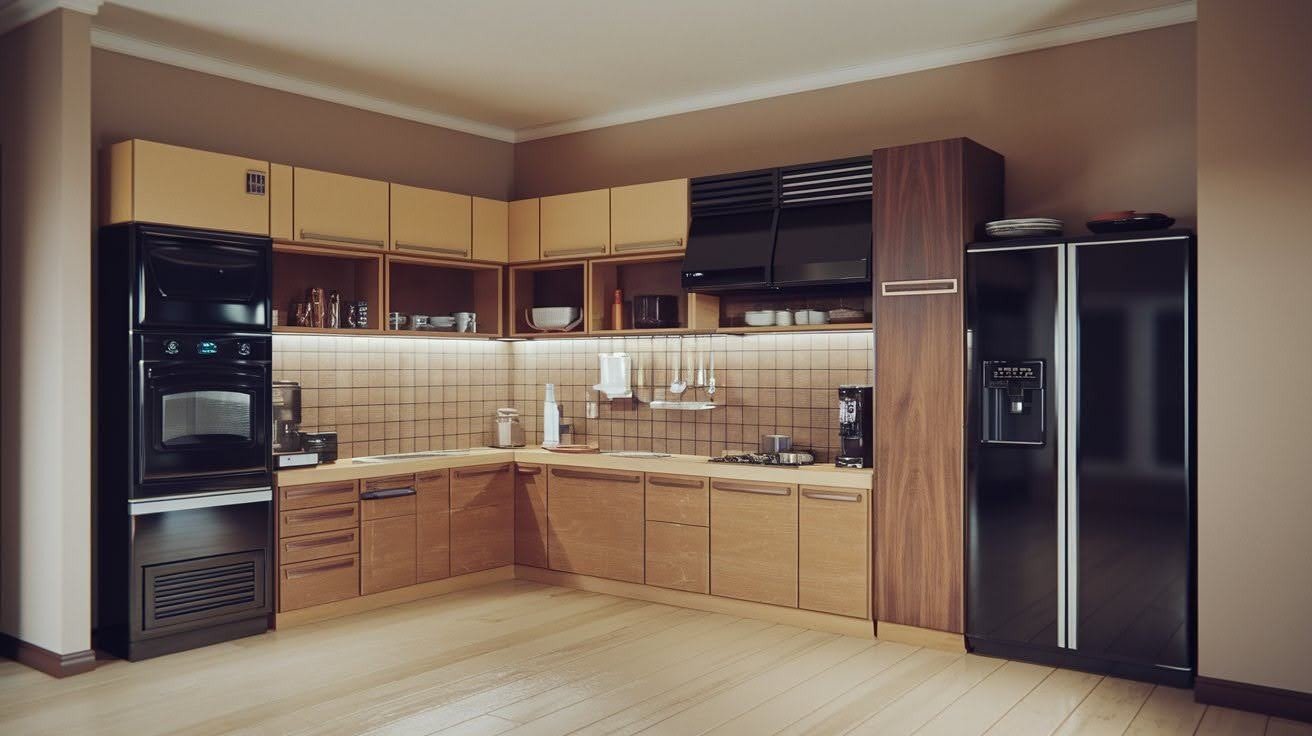
Original appeal: Black looked sleek and futuristic next to all that oak wood. I’ll be honest, those shiny black appliances from the ’80s were ahead of their time. They built contrast when everything else was beige or brown.
Today’s version is even better. Black stainless steel gives you that same bold look with more sophistication. Think about it: most kitchens today are dull, neutral colors.
Black appliances add a bold look and depth without being loud. Your refrigerator becomes a focal point instead of just blending into the background.
3. Track Lighting as Functional Art
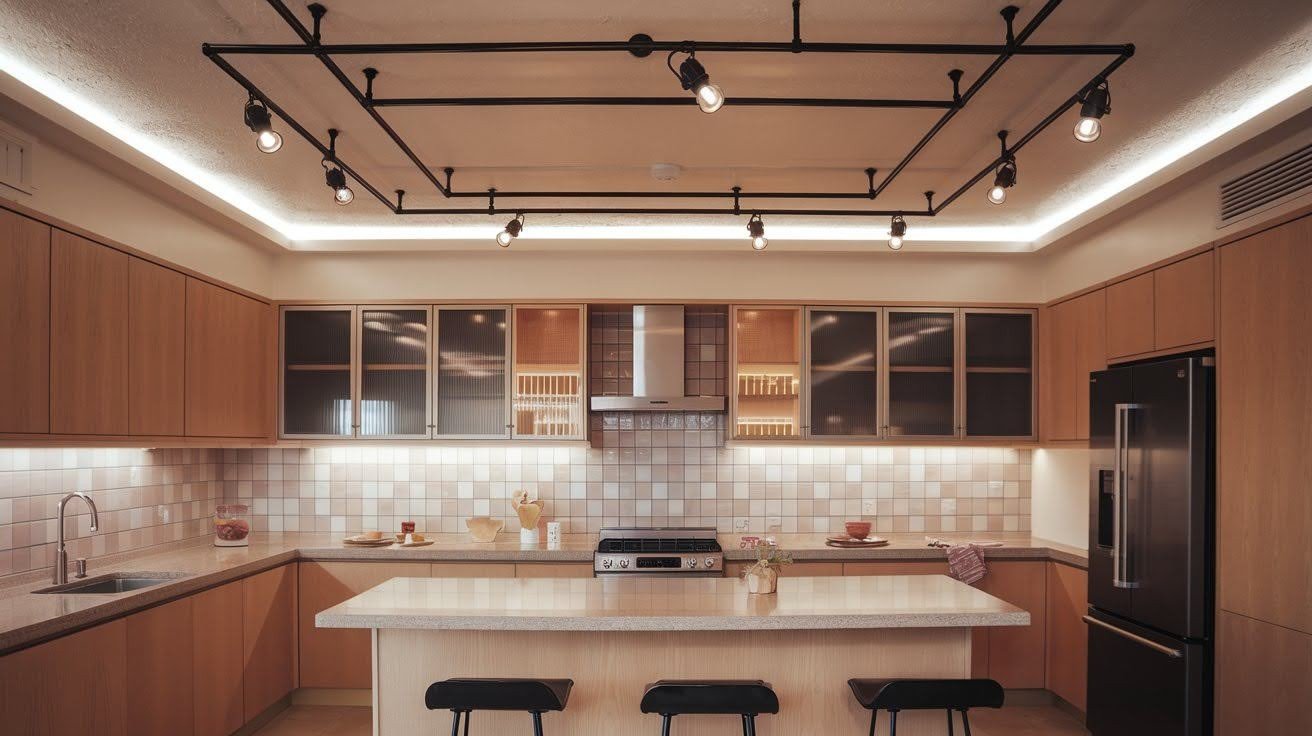
80s implementation: Finally, something better than those awful fluorescent boxes. Track lighting was a superb alternative back then. You could point lights exactly where you needed them. Smart thinking.
Today’s version is even smarter. Use it above kitchen islands where you do work. The adjustable heads let you focus light on prep areas or dim it for dinner.
Modern LED tracks look sleeker, too no more chunky metal rails. You get the same flexibility with better style and energy efficiency. Your ceiling becomes part of the lighting design.
4. Skylights for Natural Illumination
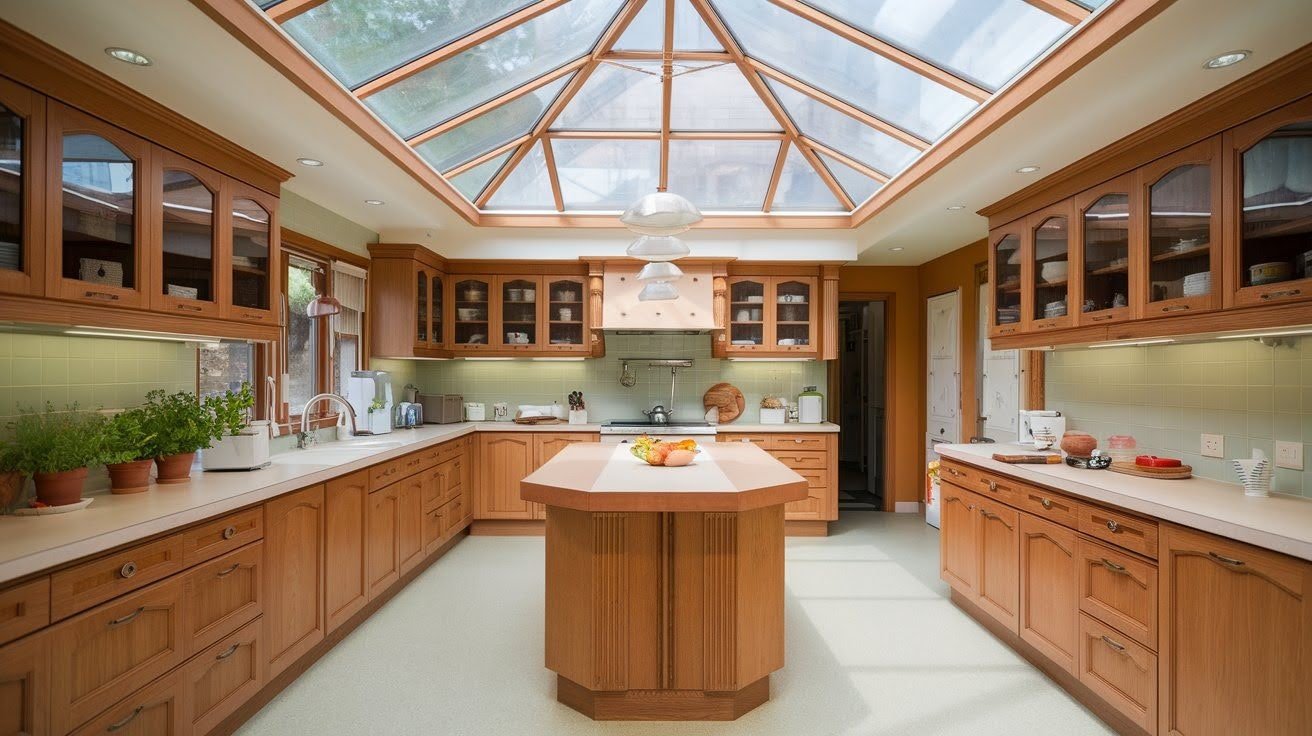
Original popularity: Every new kitchen just had to have one. I get why. Natural light makes everything better. Cooking feels more pleasant when you’re not stuck under harsh artificial lights.
The 80s got this right. Skylights bring the outdoors in without taking up wall space for windows. Here’s what still works: That connection between your kitchen and the sky above.
It opens up the space and makes it feel bigger. Modern skylights are more energy efficient, too. You get the same bright, airy feeling without the heat loss problems.
5. Greenhouse Windows Above Sinks
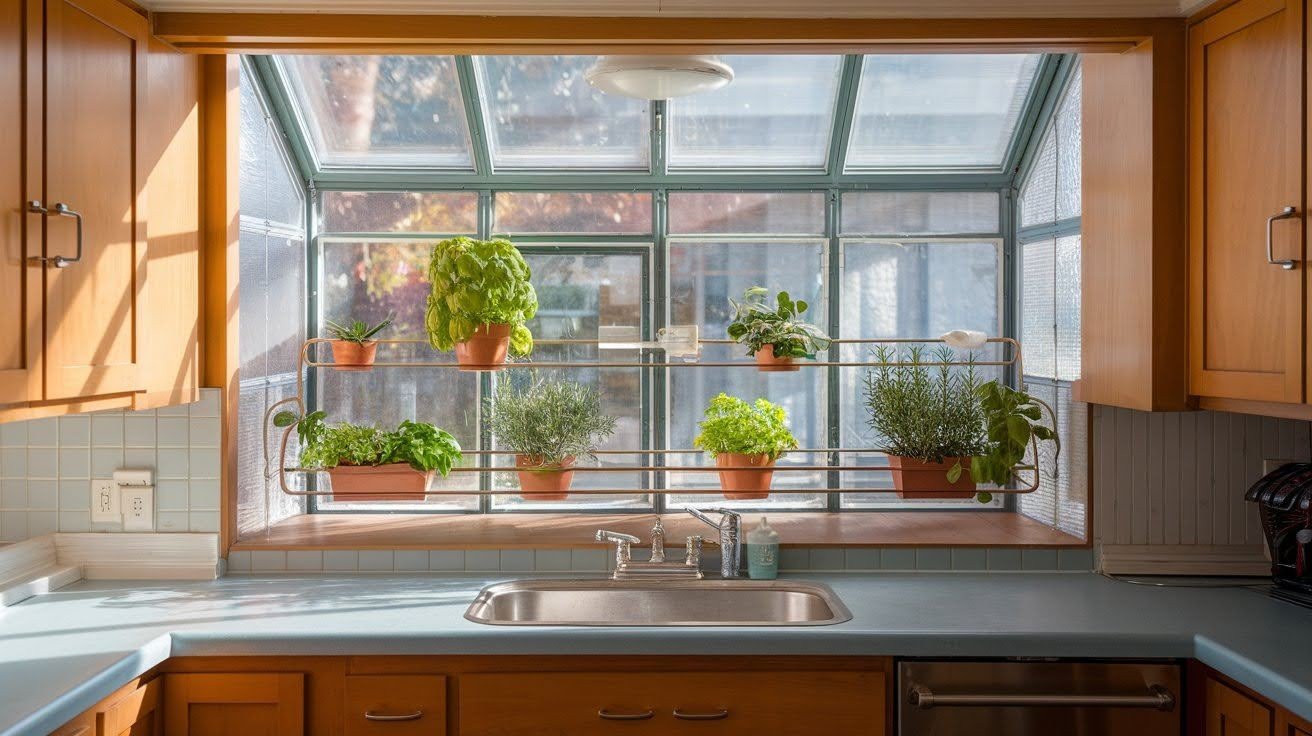
80s trend: Those bumped-out windows with built-in shelves were everywhere. Smart idea. You’re already at the sink, a Balanced spot for watering plants.
Fresh herbs right where you cook? Even better. The original versions looked chunky and outdated. Modern greenhouse windows are much cleaner. Here’s what I love about this concept:
It adds life to your kitchen without taking up counter space. Your windowsill becomes a mini garden. The natural element softens all those hard surfaces. Plus, you get extra light and a view while doing dishes.
6. Peninsula Layouts for Open Living
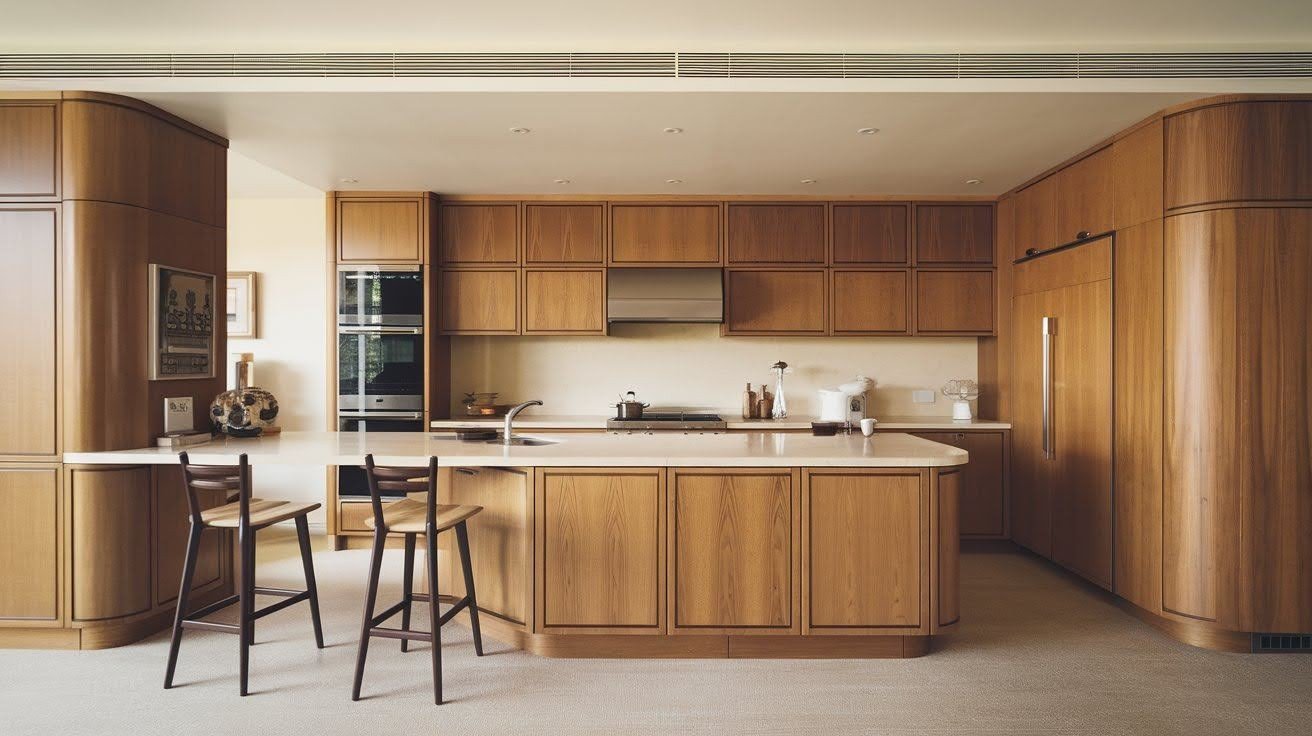
Original concept: Use upper cabinets to separate the kitchen from the dining room. The 80s were figuring out open floor plans. Peninsulas were their answer. Part island, part room divider, it worked.
Here’s the modern twist: Skip those upper cabinets altogether. Keep the peninsula base for storage and prep space. This gives you defined zones without blocking light or views.
Your kitchen feels connected but not chaotic. The peninsula becomes a natural breakfast bar too. You get the best of both worlds: open living with clear boundaries.
7. Two-Tone Cabinet Color Schemes
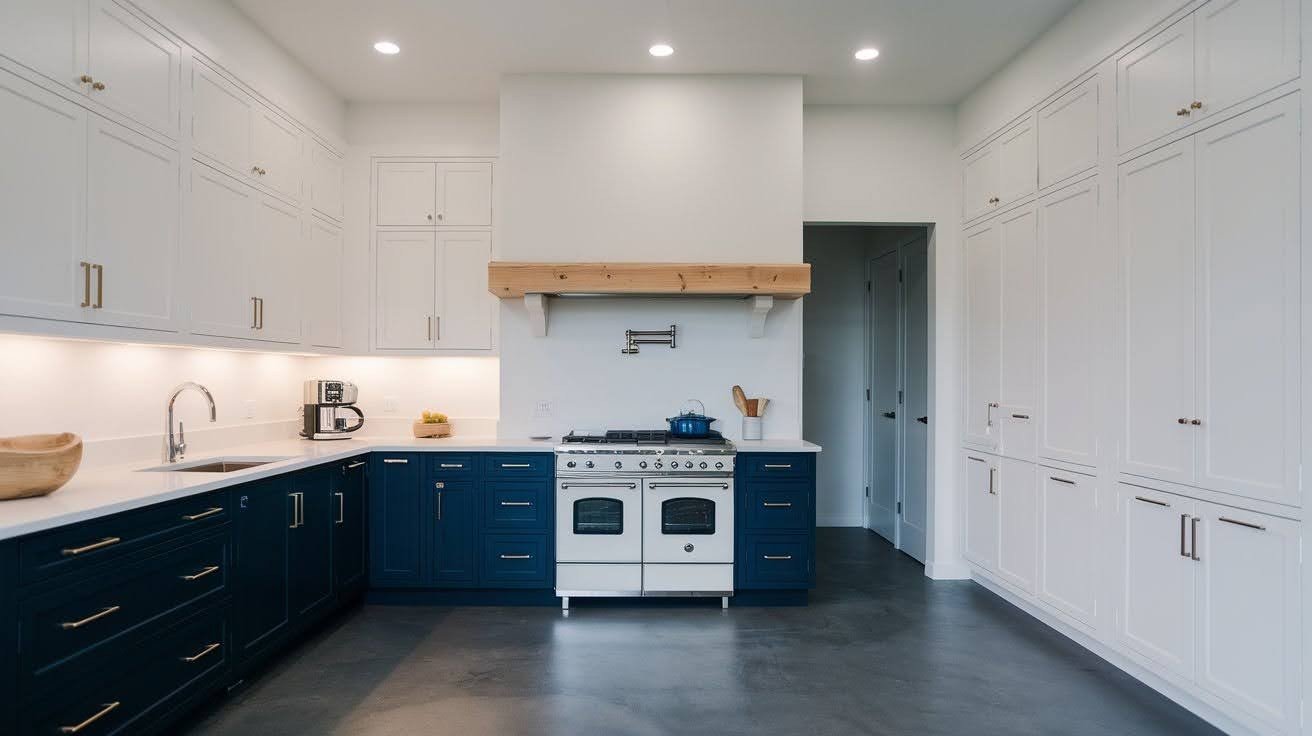
80s style: European doors with contrasting oak trim looked fancy back then. The concept was solid to break up all that wood with some contrast. The execution was a bit much.
Today’s version is cleaner white upper cabinets with navy or forest green lowers. Natural wood paired with painted accents. This approach adds visual interest without looking busy.
Your eye has somewhere to rest. The two-tone trick makes ceilings look higher, too. Light colors on top, darker ones below. It’s a simple way to change your kitchen’s proportions.
8. Butcher Block Countertops
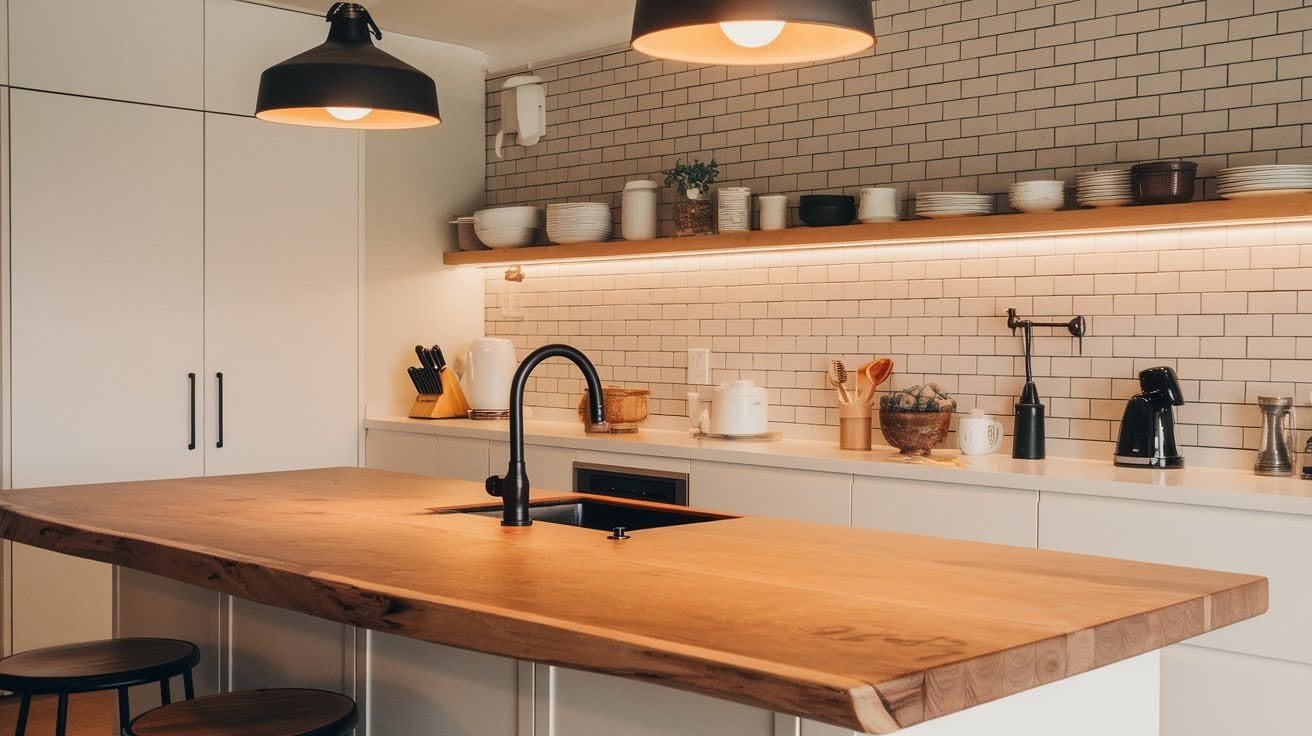
Timeless appeal: Wood counters get better with age, not worse. The 80s mixed butcher block with tile. Sometimes on the same island. It looked choppy, but the wood part was always the star.
Here’s why this material still works: it’s warm, affordable, and you can sand out scratches. Try doing that with granite. Modern kitchens use butcher block as the main countertop or as an accent.
It softens all those hard surfaces: stone, metal, glass. Plus, it’s sustainable. Your counters can last decades if you take care of them.
9. Bold Patterned Tile Accents
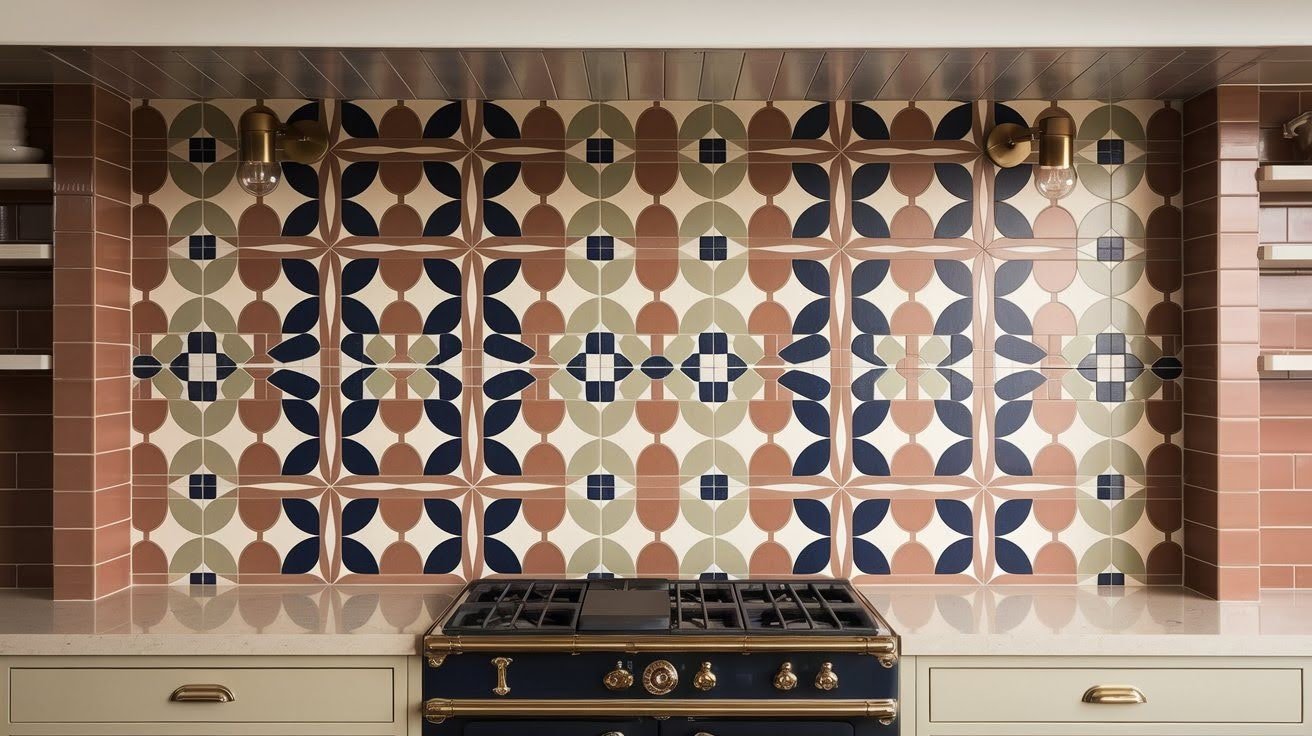
Original style: Those 4×4 tiles with little flowers and geometric shapes were everywhere. The patterns were busy, but the idea of using tile as art was brilliant. Your backsplash became the focal point instead of just protection.
Today’s patterns are more refined. Think subway tiles arranged in herringbone or vertical stacks behind your range. Here’s what I’ve noticed: Patterned tiles are having a significant moment again.
But now they’re used as accents, not covering every surface. One patterned wall builds impact. The rest stays simple, so your kitchen doesn’t look overwhelming.
10. Terra Cotta and Earth Tones
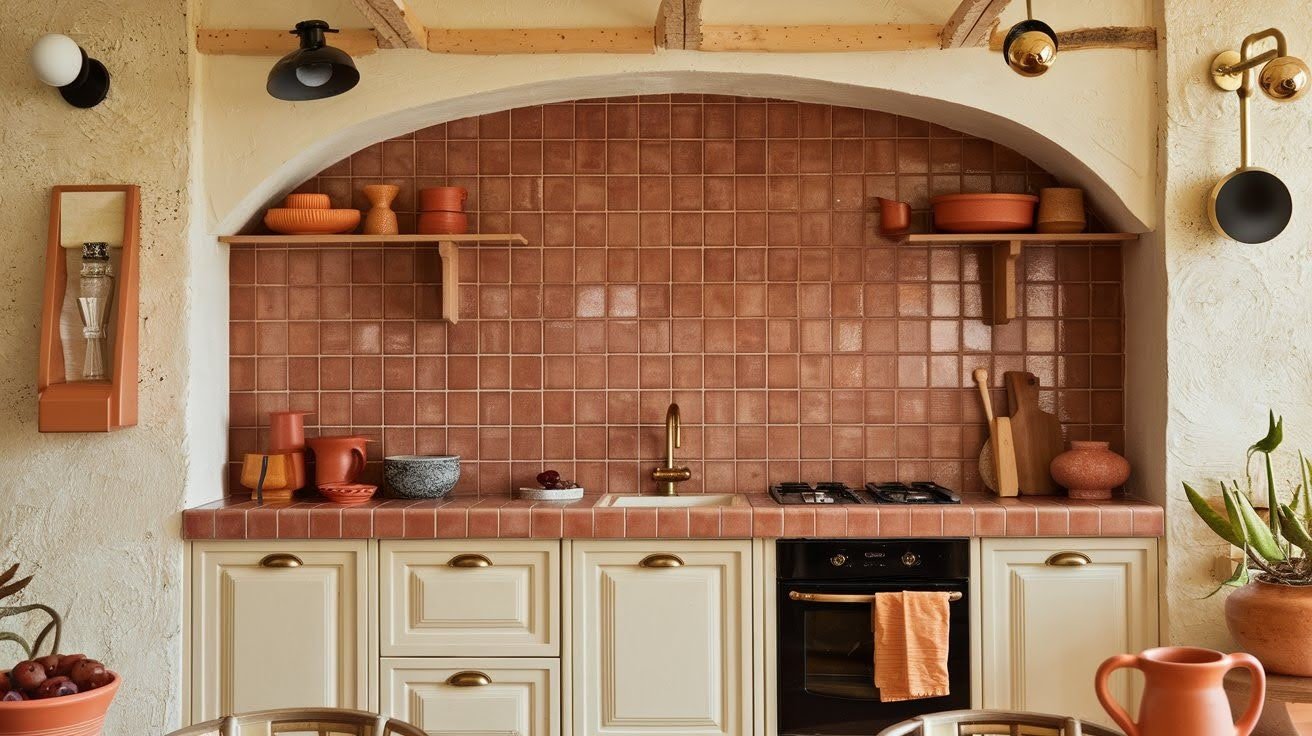
80s characteristic: Everything was orange and terra cotta. Floors, walls, and even countertops sometimes.
Too much of a good thing? Maybe. But those warm tones made kitchens feel cozy and inviting.
Modern terra cotta is more subtle. Think muted rust colors with a natural patina instead of that bright orange. These earth tones work because they’re based on nature. Your kitchen feels grounded and warm instead of cold and clinical.
Use terra cotta as an accent on the backsplash or a feature wall. It adds personality without taking over your entire space.
11. Mixed Material Combinations
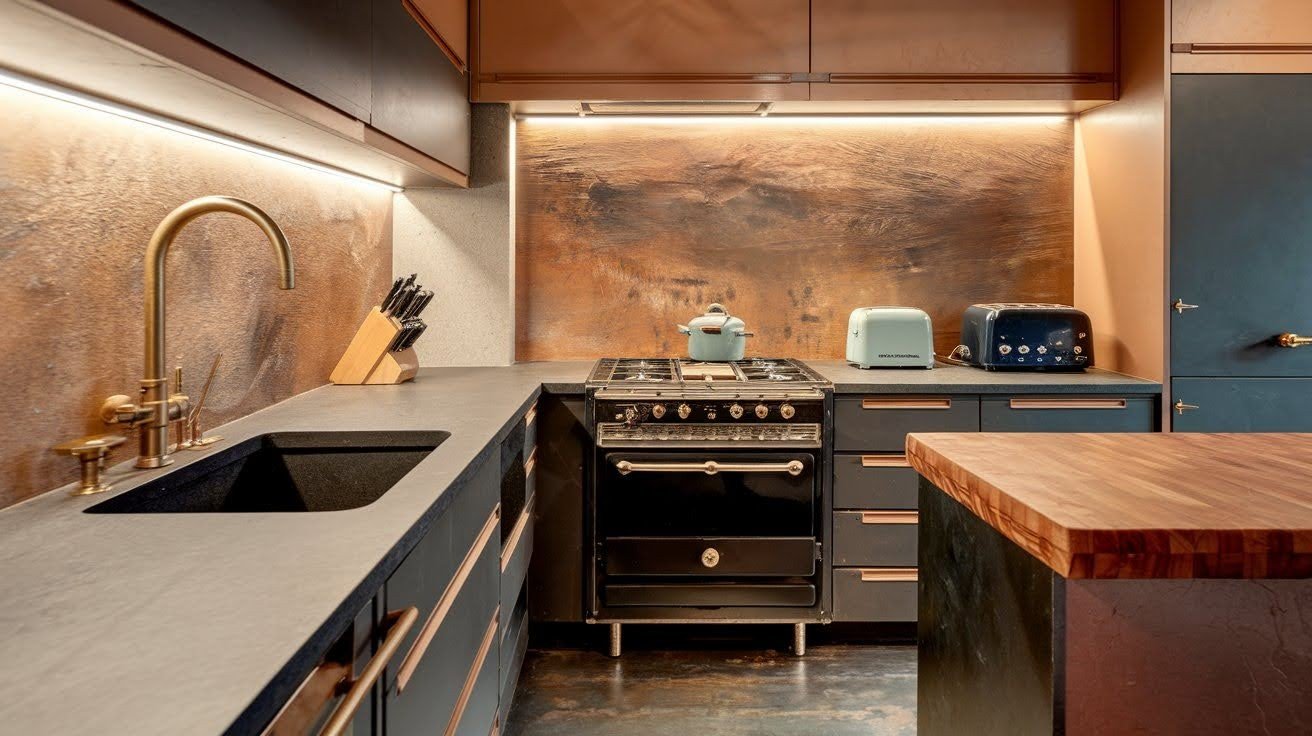
They weren’t afraid to mix butcher block, tile, and laminate all in one kitchen. Sometimes it looked wild. But the basic idea was brilliant different materials for different jobs.
Today’s version is more thoughtful: quartz for main counters, wood for the island, stone for the backsplash. Each material has its strengths. Why limit yourself to just one?
The key is balance. Pick materials that complement each other instead of competing. Your kitchen gets visual interest without looking like a showroom threw up. Mixed materials tell a story about how you use your space.
Why These Ideas Work in Today’s Kitchens?
These classic kitchen ideas work today because they balance function, warmth, and smart design, making everyday cooking and living feel easier.
Timeless Design Principles
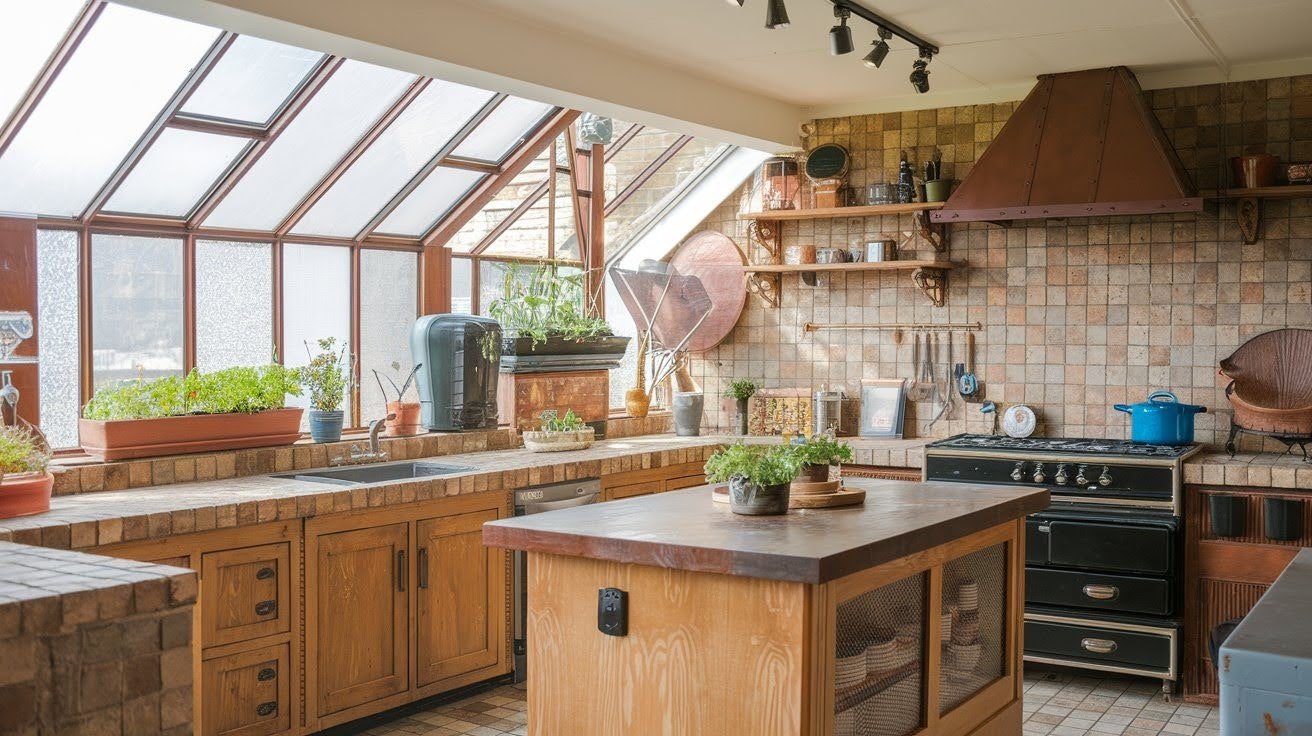
Natural materials get better with time. Wood develops character. Stone gains patina. Synthetic materials look old.
The 80s understood workflow, too. Peninsulas build work zones. Track lighting follows your tasks. Greenhouse windows put herbs where you need them.
Bold contrasts still matter. All white kitchens are boring. Black appliances against wood cabinets? That’s a visual bold look that works.
Here’s the secret: Mix and match lets your personality show. Cookie-cutter kitchens feel cold and impersonal.
Modern Lifestyle Compatibility

Open concept living needs defined spaces. Peninsula layouts solve this Balancedly connection without chaos. We crave natural light more than ever. Skylights and greenhouse windows deliver without sacrificing wall space.
Flexible lighting adapts to how you live. Bright for cooking, dim for entertaining. Sustainability matters now. Butcher block is renewable. Terra cotta tiles last for decades. These materials make sense for the environment and your budget.
Conclusion
The best 1980s kitchen ideas weren’t just trends they were innovative solutions that still make sense today. Natural materials, bold contrasts, and functional layouts never go out of style.
You don’t need a complete renovation to add some of this retro charm. Start with one element, maybe black appliances or a two-tone cabinet scheme. See how it improves your space.
Your kitchen should reflect who you are, not what’s trendy this month. These 80s ideas prove that good design stands the test of time.
Which of these ideas speaks to you? Please drop a comment below and let me know what caught your eye. I’d love to hear about your kitchen plans.
Happy cooking!
Frequently Asked Questions
What makes a 1980s kitchen design timeless?
The best 1980s kitchen elements focus on natural materials, functional layouts, and bold contrasts. Wood cabinets, butcher block counters, and mixed materials age well because they’re based on practical needs rather than fleeting trends.
Are 1980s kitchen ideas outdated or making a comeback?
Many 1980s kitchen concepts are experiencing a revival. Track lighting, two-tone cabinets, and natural materials are popular again because they solve modern problems while adding character that all white kitchens lack.
How can I incorporate 1980s kitchen style without looking dated?
Choose refined versions of 80s elements. Use black stainless appliances instead of glossy black, muted terra cotta instead of bright orange, and clean-lined greenhouse windows rather than chunky originals.
What’s the most affordable way to add 1980s kitchen character?
Start with two-tone paint on existing cabinets or add butcher block countertops. Track lighting and bold patterned tile accents also provide a significant visual impact without considerable renovation costs.
Do 1980s kitchen layouts work in modern homes?
Yes, peninsula layouts and open concepts from the 80s suit today’s lifestyle balance. They build defined spaces while maintaining flow ideal for modern open plan living.

